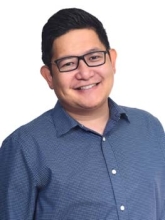
Assistant Professor
Department of Chemistry
UC Irvine
Non-UCI people, please use this registration link: https://forms.gle/jKejqep5m3rPTwuB7
Abstract: The discovery of complex physical phenomena, strongly correlated behavior and novel functionalities in the solid state has incessantly relied upon the creation of stable low-dimensional lattices at the atomic limit. Whereas 2D van der Waals (vdW) materials with atomic scale thicknesses have gained widespread interest due to the discovery of unusual physics in graphene, very little has been known about the chemistry and physics of their more quantum confined 1D counterparts. In the unexplored realm of 1D phases approaching the atomic scale, sought-after properties such as ballistic electrical transport, size-dependent photonic resonance modes, extremely long carrier lifetimes, and exotic higher-order topological states — the fundamental bases of emergent quantum and optoelectronic devices — are expected to manifest. To this end, I will present the recent efforts in my group toward elucidating (and eventually controlling) the chemical bonding interactions that define the structure, nanoscale dimensionality and physical properties of solids derived from lattices comprised of 1D chains held together by weak vdW interactions. In the first half of the talk, I will cover our work in understanding the fine interchain bonding interactions that govern the assembly of optoelectronic 1D vdW crystals in the nanoscale. By gaining precise control over these interactions via bottom-up chemical vapor growth, we demonstrate the creation of dimensionally resolved nanostructures with various thicknesses ranging from 1D nanowire bundles to quasi-2D nanoribbons and nanosheets. I will show the strong influence of chemical bonding anisotropy on the photophysics of these dimensionally resolved nanostructures and how the synthetic strategies that we developed for these model phases can be generalized to various classes of 1D vdW solids. I will also define the mechanism of the anisotropy-driven growth of these 1D vdW-derived nanostructures that are poised as building blocks of densified electronic and quantum devices in sensing, photonics and energy conversion technologies. In the second half of the talk, I will describe how we discovered a class of 1D vdW solids that crystallize as weakly bound helical chains. The creation of these helices enabled us, for the first time, to observe atomic scale order consistent with the elusive Boerdijk-Coxeter (B-C) aperiodic tetrahelix motif. I will talk about how we were able to achieve this rare helical aperiodicity by engineering the local coordination environment in a 1D vdW lattice that possesses a periodic screw axis symmetry. This new class of exfoliatable 1D vdW B-C tetrahelices presents a unique materials platform to elucidate the non-trivial synthetic design rules that govern helicity and chirality in low-dimensional solids, which, eventually, can lead to materials for sub-nanoscale nonlinear chiroptics, long-range spin-momentum locking via chirality induced spin selectivity, thermochromicity and even topological helicoid quantum states.
Bio: Maxx Q. Arguilla originates from the Philippines. He obtained his bachelor's degree in chemistry (cum laude) from the University of the Philippines Diliman (UPD) in 2011. After a one-year junior faculty position at UPD, he moved to the U.S. and completed his doctorate in inorganic chemistry from The Ohio State University under the mentorship of Professor Joshua Goldberger in 2017. His dissertation centered on the electronic, optical, thermal and quantum properties/applications of anisotropic 2D solid-state van der Waals lattices in the bulk and at the nanoscale. He then transitioned to MIT as postdoctoral fellow in Professor Mircea Dinca’s group, where he focused on: (1) the growth of model 1D van der Waals crystals and probing the evolution of their physical properties as they transform into ultrathin nanowires; and (2) establishing the anisotropic physics of conducting/metallic 2D metal-organic frameworks in the single crystal regime. In July 2020, Arguilla started his independent career as a tenure-track assistant professor in the Department of Chemistry at UCI where he is also a faculty affiliate of the new Eddleman Quantum Institute. At UCI, he established the Maxx X Lab (MXLab: Experimental Low-Dimensional Condensed Matter Chemistry Laboratory), an interdisciplinary chemistry group positioned at the interfaces of solid-state chemistry, materials chemistry and physics, and nanoscience. Research in the MXLab focuses on the chemistry and physics of novel low-dimensional solids that are positioned to become building blocks in next-generation technologies that amalgamate nascent quantum phenomena with energy, computing and sensing platforms.
Host: Assistant Professor Erdem Sasmaz
Share
Upcoming Events
-
MSE 298 Seminar: Mechano-Electrochemical Phenomena at Ceramic Electrolyte Interfaces
-
CBE 298 Seminar: Beyond the Tailpipe - From the Science of Soot Formation to the Engineering of Carbon Nanomaterials
-
MSE 298 Seminar: Innovation In Materials Science - An Industrial R&D Perspective
-
MSE 298 Seminar: Understanding the Impact of Grain Boundary Inclination on Grain Growth Using Modeling and Simulation and Experiments
-
EECS Seminar: Mixed Conductors for Bioelectronics
